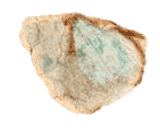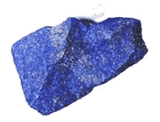| Gemstone Chart |
 Natural Idocrase Natural Idocrase
Primarily a green color that will resemble jade.idocrase is one stone that is sometimes mistaken for jade by jewelers and consumers alike. Idocrase is from the greek and means mixed form, an allusion to its crystals showing a mixture of other mineral forms.
Color: normally green, but also can be brown, yellow, blue and/or purple.
Categories: semi-precious stone
Chemical Composition: nesosilicate or sorosilicate
Crystal Group: Tetragonal
Refractive Index: 1.71 - 1.73
Hardness: 6.5
Density: 3.3 - 3.5
Occurrence: Quebec, Canada; California and the New England region of USA; Mt Vesuvius, Italy; Ural Mountains, Russia, Switzerland, East Africa
|  Natural Jadeite Natural Jadeite
A rare, usually green mineral of the pyroxene group. Jadeite can also occur in white, auburn, buff, or violet varieties. The most highly valued form of jade consists of jadeite.Jade has a history in China of at least four thousands years.Experts believe that, although more expensive, diamonds and gold cannot be compared with jade - jade is animated with a soul.
Color: Pure white thru pink, brown, red, orange, yellow, mauve, violet, blue, and black, to an extensive range of green and mottled green and white.
Categories: semi-precious stone
Chemical Composition: NaAl(SiO3)2
Crystal Group: Monoclinic
Refractive Index: 1.654 - 1.667
Hardness: 7
Density: 3.32
Occurrence: Northern Myanmar. Non commercial discoveries of Jadeite have also been reported in China; Russia (in the Polar Urals); Niigata, Japan; San Benito County, California, USA, and Guatemala.
|  Natural Lapis Natural Lapis
Lazurite is a popular but generally expensive mineral. Well-formed, deep blue crystals are rare and valuable. Lapis lazuli is a gemstone of the kind that might have come straight out of the Arabian Nights: a deep blue with golden inclusions of pyrites which shimmer like little stars.
Color: Blue, greenish-blue, violet blue
Categories: semi-precious stone
Chemical Composition: A complex aggregate
Crystal Group: Not applicable
Refractive Index: 1.5
Hardness: 5.5
Density: 2.7-2.9
Occurrence: Afganistan, Pakistan, Chile, Russia, U.S.A., Angola, Burma
|  Natural Topaz Natural Topaz
Topaz is a silicate mineral most often found in igneous rocks of felsic composition. It is a common gemstone that has been used for centuries in jewelry. Gem quality topaz most commonly occurs in nature as a colorless crystal. It is a very popular gemstone.
Color: colorless, blue, yellow-brown, pinkish orange, red-orange, red-brown, tan.
Categories: semi-precious stone
Chemical Composition: AL(F,OH)2SIO4
Crystal Group: Orthorhombic
Refractive Index: 1.629 - 1.637
Hardness: 8
Density: 3.52 - 3.56
Occurrence: Brazil, Sri Lanka, Nigeria, Germany, Australia, Japan, Russia, Ireland, Zimbabwe.
|  Natural Turquoise Natural Turquoise
Turquoise is an opaque, blue-to-green mineral that is a hydrous phosphate of copper and aluminium.The gem turquoise owes it's beauty almost entirely to its superb color. It has been used for ornamentation since 3000BC and possibly before.
Color: Blue, Greenish Blue
Categories: semi-precious stone
Chemical Composition: CuAl6(PO4)4(OH)85H2O
Crystal Group: Triclinic
Refractive Index: 1.62
Hardness: 5.5-6
Density: 2.60- 2.90
Occurrence: Iran, USA, India, Tibet, China, Egypt, Chile, Russia, Australia
|
|
